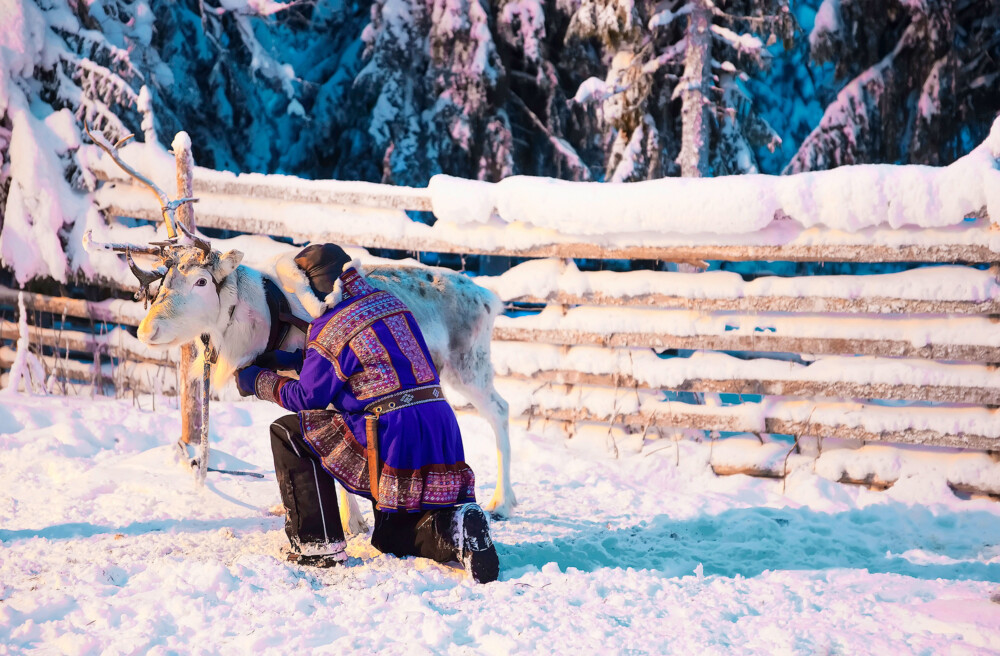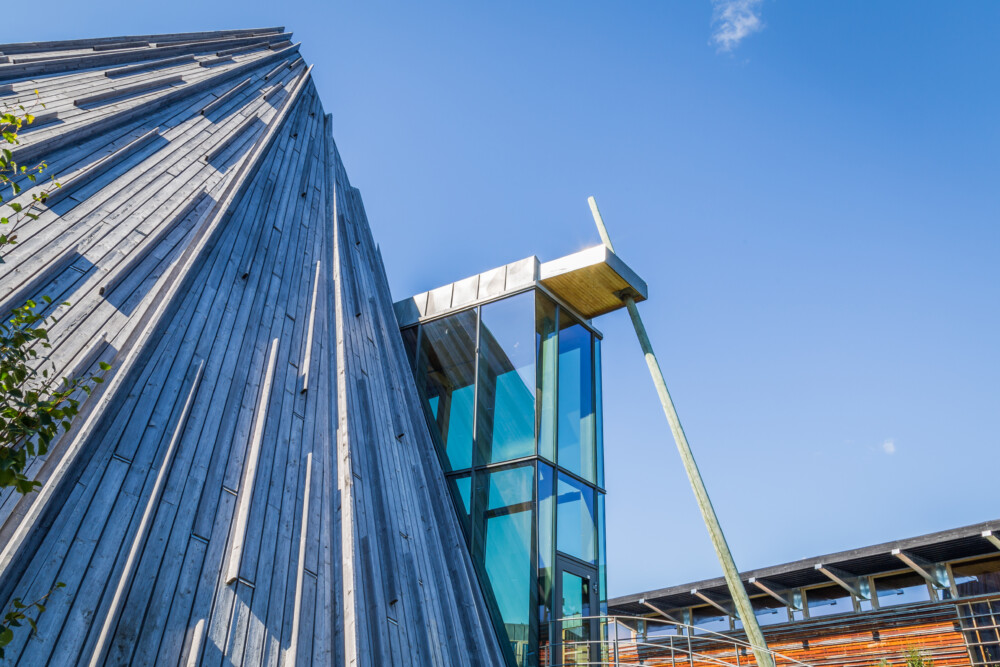The Sámi and their remarkable culture
Deep in the north of Europe, where the snow blankets the forest floor, there live indigenous people who have called this land home for centuries. The homeland of the Sámi spans parts of Finland, Sweden, and Norway, though their unique culture has penetrated these countries (and beyond) to a great extent. Known for their in the outdoors, especially with huge herds of reindeer upon which they rely, the Sámi have much to share about loving, respecting, and co-existing with nature. And we, travelers to and lovers of Europe, can learn a thing or two from them! Here’s your guide to Sámi traditions, learning about northern European nature (especially in Finland and Norway), and seeing the outdoors with new, adoring eyes.
Far north in Finland
The Sámi are an integral part of Finnish society. Legally, their homeland in Finland covers the municipalities of Enontekiö, Inari and Utsjoki as well as the Lappi reindeer-herding district of Sodankylä. That said, their influence and presence is everywhere, especially in the northern parts of the country. A great place to begin your exploration is at Siida in Lapland, a place that combines rich Sámi culture with the beauty of the Arctic. Siida is a Sámi village, and it’s also home to a museum that celebrates their heritage. This museum offers something fascinating for visitors who only stay for a few days: a clear sense of what the year’s cycle feels like from the perspective of the Sámi. Did you know that the Sámi are so well-attuned to nature that they actually perceive—and follow—eight annual seasons rather than four? This doubling is well-reflected in food and local dishes, which change and evolve depending on the time of year and often include ingredients (like pine branches) that you might not expect. Since Christmas is just around the corner, we will add one traditional food item: Christmas bread, a sweet rye made with spices and buttermilk. One last note on the Sámi Museum: the exhibitions rotate and change all year round, going from outdoor experiences in summer to indoor ones when the temperatures fall.

Just a few steps away from the museum is another experience that will help you understand the Sámi even more. The Sámi Parliament, where indigenous elders meet and manage their self-governance, is in and of itself worth visiting for an important reason: it is an example of how first nations people are given self-determination, representation, and self-suffrage. But that’s not all. At the Parliament, you can also book a place at a workshop to learn the basics of duodji (crafts), such as embroidery, jewelry, and woodworking. As if all these activities weren’t enough, there’s still the outdoors! Indigenous traditions often circle around gathering food. Here are a few ideas: organize an ice-fishing trip! This skill, which goes back millennia, involves patience and warm clothes. But the payoff—a fresh perch or grayling—is well worth the effort. Other activities might be mushroom or berry picking (in the summer, of course) or foraging for nuts.
Norway’s never-ending night (in the best way possible!)
Polar night is one of those remarkable natural phenomena that, once you experience it, stays with you for a lifetime. In brief, it’s when nighttime lasts for more than 24 hours. In northern Norway, also a homeland for the Sámi, polar nights—or something close to it—happen during the deepest parts of winter. Picture this: the landscape is covered in deep snow, the sun has not and will not breach the horizon, and yet, a subtle glow illuminates the soft powder and, high in the sky, colors glimmer. It’s in this world that Norway’s Sámi has thrived for generations. In fact, about half of all Sámi live in Norway, and many of them have managed to maintain their traditions even as our world becomes more global and connected. Here’s what we propose: remember that image we drew in your mind a few sentences up? Well, add this to it: in the distance is a row of low, two-story houses. You can see them glowing. The light flickers and moves—it’s the unique illumination that comes from a flame. You remember: there’s a wood-burning stove; my Sámi hosts must have built a fire. This scenario is no figment of the imagination, it’s something you could do. In northern Norway, Sámi families will host you. This brings two wonderful benefits—you get to stay in a setting unlike any other with the warmth of a family, and you get to understand, in a deep, meaningful, and hands-on way the culture of these indigenous people. Two Sámi towns where you can do this sort of homestay are Karasjok and Kautokeino.
What else might you discover and explore? Visit the Varanger Sámi Museum, which specializes in prehistoric Sámi culture and handicraft, especially on the coast. The museum promises experiences totally unique to Norway. Aside from learning about the Sámi during the Stone Age as well as their mythology, religion, and economy, you can also try your hand at making their handicrafts. Above all, you can meet and learn about these people, who they are, and why they are important. Human interaction, after all, is what much of life is about. Last but not least, the Norwegian Sámi Parliament, which is about a two-and-a-half-hour drive from the museum, is worth a visit. Aside from its massive symbolic importance, its architecture is incredible. Shaped as a lavvu, a temporary dwelling similar to a North American tipi, it at once honors the history of the Sámi and their bright future.
